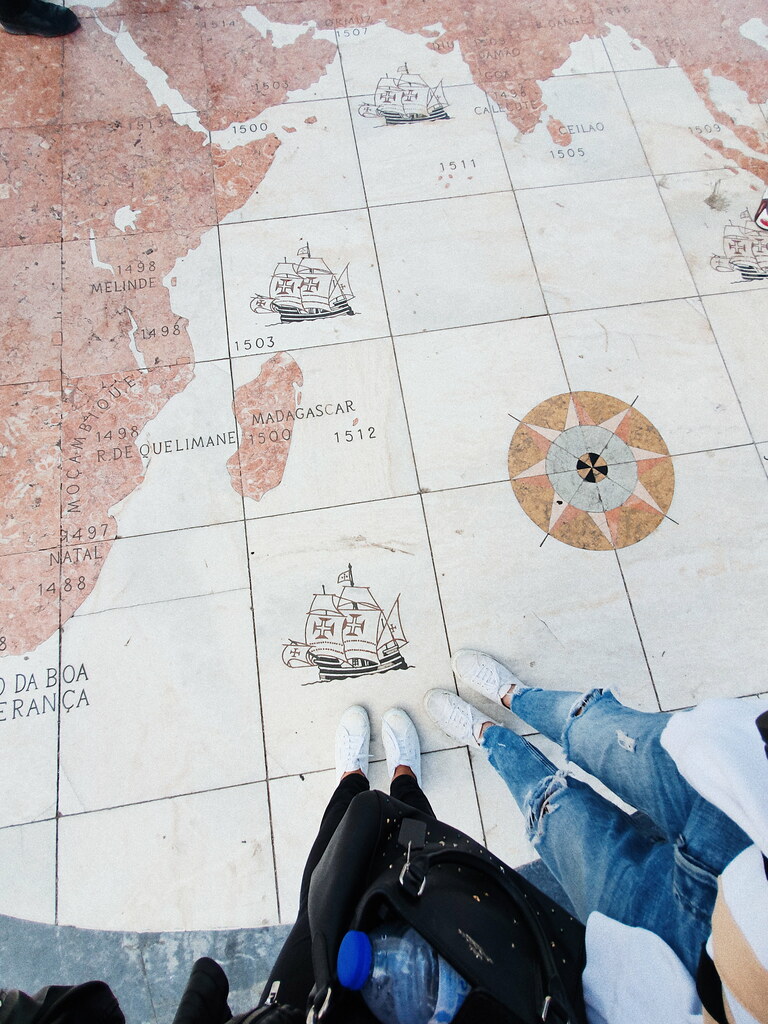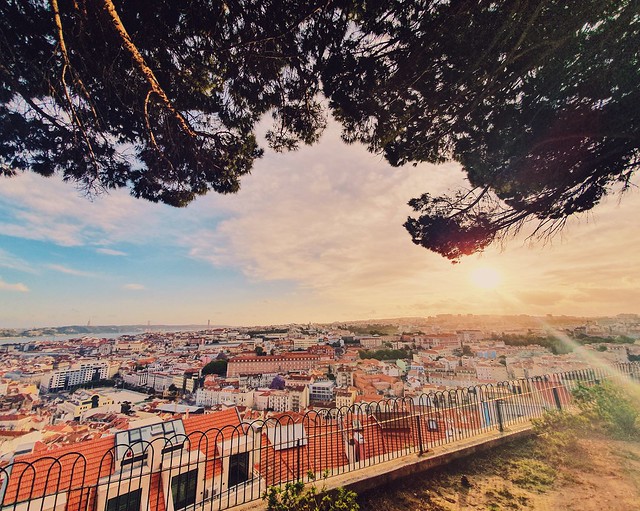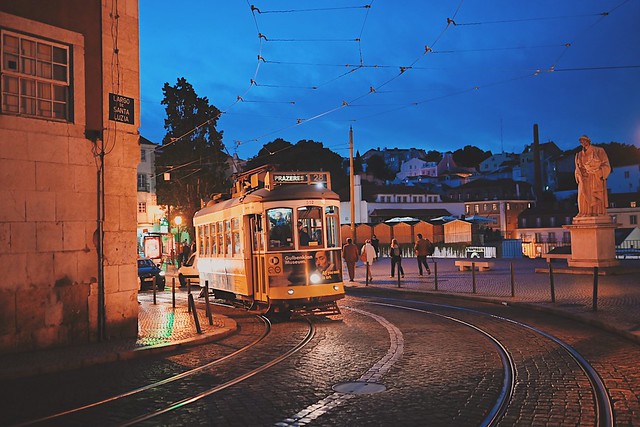First things first – whether you’re arriving in Lisbon by plane or train, chances are you’ll be close to a metro station. Get yourself the most basic 24 hour transport pass from the metro station machines, which give you amazing value for what they cover.
This is the pass you want to be looking at:
Carris/Metro: €6.40
Unlimited travel on metro and Carris, including bus, tram, funicular and lift.
if you’re not staying the night, store your luggages away so you’re free to explore the city without baggage. Portugal is actually impressive with their luggage storage – where most places just have lockers, they have an airbnb sort of model for luggages. They’re living in year 3000! Here are some options:
1. Pre-booking luggage space
I LOVE this idea! Companies like BagBnB, Luggage Keeper, Luggage Hero, and Stasher allows you to connect with local shops, cafes, and other businesses that allow for luggage storage. If you book it online, you can usually use credit card/paypal, which is useful if you’re saving your cash for other things.
Things to note if you’re keen on using these services:
– They have varying insurance coverage from firm to firm – how much is your bag insured for?
– What time do these shops open – in relation to what time you arrive and intend to depart?
– Do they offer refunds if you decide not to use these services upon arrival?
– Read the reviews of the cafes/shops that you want to store your luggage with – Luggage Keeper and BagBnb lets users leave reviews of the bag storage services, so you get a sense of what to expect.
2. Using a locker
City Locker is their local Portuguese luggage locker company, with lockers in strategic areas around town. Their rates range from 4.50 to 8.50 eur per day, depending on your luggage size. Click here for the full price list.
3. Luggage Storage in the airport
There are 24 hour luggage storage areas in the airport (near carpark P2) and you pay for your first day – and when you return, you pay for any additional days you may have used. Useful if you arent sure how long you want to stay in Lisbon!
4. Luggage storage in the train stations
There are storage lockers in the train stations – you can view them on the CP website here – but you can only store your luggage for a maximum of 24 hours.
And now that you have the 24 hour pass, you can get your luggages to most of these places easily! Happily, most train stations in Lisbon have elevators, although they’re sometimes strangely hidden behind pillars or things like that. This makes it quite easy to move via the metro system with your luggage.
10am – Head to the super cool Barrio Alto region, specifically Time Out Lisboa to have your mind blown. Time Out has specially curated food markets in some major cities, bringing the best vendors in that city under one roof via an independent judging panel. My first time encountering one of the famous markets was in Lisbon, and it was incredible! The only problem you’ll have is deciding where to eat, because they all look and smell so good. Here’s what I had:
Manteigaria Silva’s tábua mista for charcuterie
This was an explosion of heaven in my mouth – I have literally never had a better charcuterie experience in my life. We were super lucky to be there during their anniversary, so they had a one for one offer on their 17euro tábua mista option, making this very value for money indeed. Tábua mista basically means a mixed board – they present to you their own selection of the best picks for that day, a little like a European, one platter version of the omakase. The first day we were there, the board consisted a cheddar, a goat brie, and another hard cheese I couldn’t identify. The second time we went back, the board was made of hard and semihard cheeses. The third time we went back, we went straight for our favorite cheese because we already knew what we liked and it was more economical to pick individual cheeses than get a board. Yes, that’s right – it was so good, we visited thrice.
View this post on Instagram
Manteigaria Pastel de Nata
How can you come to Portugal and not have one of their egg tarts? The Portuguese egg tart differs from the Chinese ones in that they’re more custardy and sweet (as compared to our decidedly more tofu-like variant), and they have a flaky, not biscuity crust. They’re best fresh out of the oven, which means you want to have your tart from a place that is constantly making them, not ordering it off the shelf where it might have been perched for a couple of hours. Manteigaria in Time Out Lisboa has perpetual queues and an open kitchen, so you can watch them being made, and at the rate they fly off the shelves, you know the one you’re biting into has been baked within the hour. You can also have them packed – dont keep them in the fridge, eat them within 3 days, and yes, they’re flight safe, we tested!
Have your tart (1eur) with an espresso (70c) – it’s quite the match made in heaven.
Time Out Market Lisboa
Av. 24 de Julho 49, 1200-479 Lisboa, Portugal
Afternoon:
A mere 4 minute walk from the market you have what’s arguably the most scenic funicular of the three – Ascenso da Gloria. There’s also Ascensor da Bica and Ascensor do Lavra, but those are a little further away. Here you can start to make your 24 hour transport pass really work for you – the funicular is covered under your pass, which immediately gives your pass excellent value because it costs 3.60eur for a single trip otherwise.
The funicular runs every fifteen minutes, with one going up and one going down, so they do pass each other on every run which makes for a cute photo.
Walk your breakfast off
Time to make your pass work for you again. Head back down to the busstop right outside Time Out Lisboa, and hop on the 15 (electric tram) or 728 (bus) to the Belem Tower. The Belem area is one straight coastline of beautiful sights, and you’ll want to take the bus to the furthest point (the tower) and walk back, ending up eventually at Pasteis de Belem. It’s a 1.4 km walk, which sounds very unreasonable for us tropical creatures, but once you realise how dry and windy the weather is there, it becomes totally manageable. As you walk, ponder how humidity truly has ruined us as Singaporeans…
The tower’s hours are 10:00 – 18.30 (Summer Months) and 10:00 – 17.30 (Winter Months). It costs 6Eur to go in, and 12Eur for a combined ticket with the Jerónimos Monastery. And on Sundays before 2pm – free! So you’ll want to be there during those times if you’re keen on going in. Otherwise, many people choose to just hang around the outside and sit by the coast to people watch.
You should end up at Pastéis de Belém, the most famous Portuguese egg tart shop in Lisbon, maybe all of Portugal. You’ll know it by the buzzy queues gathered outside. Don’t just blindly join the queue – the queue you see outside is for takeout only. Walk past it and go inside, where there’s another, much shorter queue for dining in. The takeout queue was monstrous, but I only had to wait 5-10 minutes to be seated.
The bus stop back to the city center is right outside Pastéis de Belém, so hop on the bus and head back to the Barrio Alto region. Take some time to wander the streets of Barrio Alto, stopping by the Pink Street (which used to be their red light district back in the day) and popping into Betrand, the oldest operating bookstore in the world. Don’t expect to purchase anything though – their selection is mainly Portuguese, and prices are understandably higher than usual. Still, it’s a really cool bookstore to see, if you’re a lit geek like me.
Belem Tower
Av. Brasília, 1400-038 Lisboa, Portugal
Pastéis de Belém
R. de Belém 84-92, 1300-085 Lisboa, Portugal
Bertrand
R. Garrett 73-75, 1200-203 Lisboa, Portugal
Evening:
Depending on what season it is, you’ll either have a good amount of time to wander around Barrio Alto before sunset, or have to head to a higher vantage point immediately. Skip the trendy rooftop bars, where prices are jacked and the food isn’t as good – look for signs pointing you to a Miraduoro instead. Lisbon is built on seven hills, and miradouro literally means viewpoint, which also means public access, which also means free!
Miraduoro da Nossa Senhora do Monte
Largo Monte, 1170-107 Lisboa, Portugal
Night:
After the sun dips below the horizon, head back down to Martim Moniz square in the city center, where you can now queue for the famous Ponto Inicial Trem 28, the star of all postcards postmarked Lisbon. I think dusk is the best time to take the tram because it is ridiculously crowded before that, with absurdly long queues. We’re talking 1-2 hours long! The Tram 28 queue + actual ride is also a hotspot for pickpockets, which is kind of a bummer. Much better to take the tram when it’s less crowded and you’ll actually get a seat – and it’s much more comfortable too when you can actually breathe, versus being pressed up against fifty other selfie stick wielding tourists. For some reason once it’s dusk, people stop queuing for the trams, which makes this a time efficient and very pleasant moment to hop on.
Miraduoro da Nossa Senhora do Monte Santa Luzia
Largo Monte, 1170-107 Lisboa, Portugal
Dinner is a slow, languid affair, capped off with either a small glass of port (their region’s specialty, a deep, sweet dessert wine) or an espresso. At the end of it you can either head out for more drinks, or no, but from experience, over the course of dinner you feel a sense of great satisfaction and lazy happiness settle over you – and at that point, it’s not a bad idea at all to call it a night, and take a slow, relaxed amble back either to your accommodation, or to where your bags are stored, retrieve them, and leave the city, mildly regretful at not allocating more than a day there.
x
Jem









